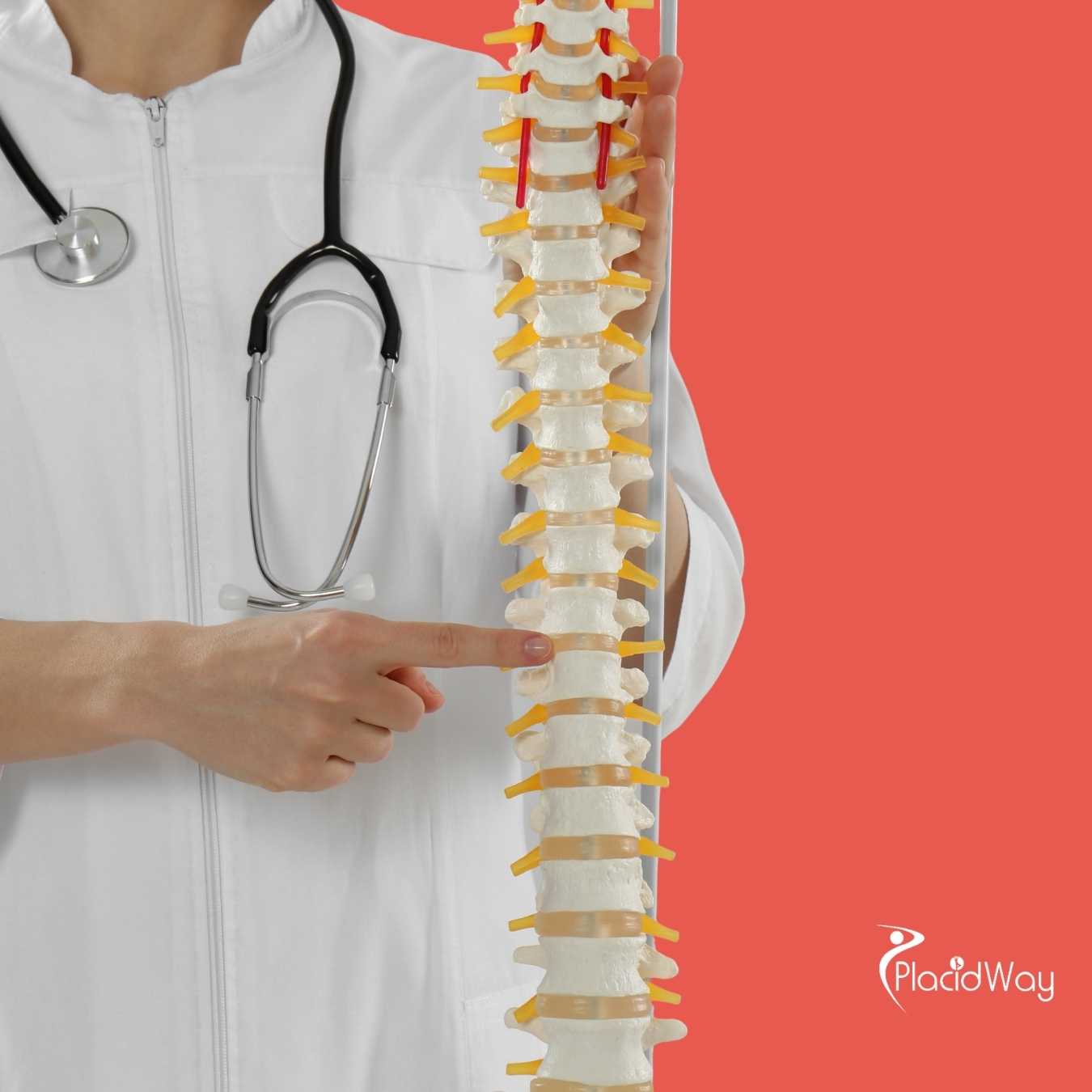Turning Back Time: How Stem Cell Therapy Targets Aging at the Cellular Level
The quest for eternal youth is as old as humanity itself, and in the modern era, science is offering some intriguing possibilities. One of the most talked-about frontiers in this pursuit involves stem cells. Many people are wondering: Can you reverse aging with stem cells? It's a question that sparks both hope and skepticism, touching on the very essence of how our bodies age and what might be done to combat it. The idea of using our body's own regenerative power to turn back the clock is certainly compelling.
While the concept of full anti-aging reversal might still reside in the realm of science fiction, current research into stem cell anti-aging therapies is showing promising results in addressing the underlying mechanisms of aging. Scientists are exploring how these remarkable cells can repair damaged tissues, reduce inflammation, and restore cellular function, which are all critical factors in the aging process. This field, known as regenerative medicine, focuses on improving healthspan and quality of life as we get older, offering new hope for mitigating age-related conditions.
How Do Stem Cells Combat Aging?
Stem cells possess unique properties that make them central to the fight against aging. They are undifferentiated cells, meaning they can develop into many different cell types, and they have the ability to self-renew, creating more stem cells. This regenerative capacity is crucial for repairing and maintaining tissues throughout our lives. As we age, our natural supply and function of stem cells often decline, leading to reduced repair capabilities and the accumulation of cellular damage.
The mechanisms by which stem cells exert their anti-aging effects are multifaceted. They can directly replace old or damaged cells, helping to restore the function of organs and tissues that have deteriorated with age. Beyond direct replacement, stem cells also act as powerful communicators, secreting various growth factors, cytokines, and exosomes. These bioactive molecules can modulate the immune system, reduce chronic inflammation (a key driver of aging), and stimulate the body's own healing processes. Essentially, they create a more youthful cellular environment, improving overall tissue vitality and resilience.
What Types of Stem Cells Are Used in Anti-Aging Research?
Several types of stem cells are being investigated for their potential in anti-aging treatments. Each type has distinct characteristics and applications:
- Mesenchymal Stem Cells (MSCs): These are adult stem cells found in various tissues, including bone marrow, adipose (fat) tissue, and umbilical cord blood. MSCs are highly favored for research and therapeutic applications due to their immunomodulatory properties and ability to differentiate into bone, cartilage, and fat cells. They are particularly effective at reducing inflammation and secreting beneficial factors, making them a cornerstone of many anti-aging strategies.
- Induced Pluripotent Stem Cells (iPSCs): These are adult cells that have been genetically reprogrammed to an embryonic-like pluripotent state, meaning they can differentiate into virtually any cell type in the body. iPSCs offer the potential for patient-specific therapies, avoiding immune rejection, and are being explored for regenerating complex tissues and organs damaged by age.
- Hematopoietic Stem Cells (HSCs): Primarily found in bone marrow and umbilical cord blood, HSCs are responsible for generating all blood cell types. While typically used for blood disorders, their role in maintaining a healthy immune system means they indirectly contribute to combating age-related immune decline.
- Embryonic Stem Cells (ESCs): Derived from embryos, ESCs are pluripotent and have immense regenerative potential. However, their use is often associated with ethical considerations, and they also carry a risk of tumor formation, limiting their direct application in human anti-aging therapies currently.
Are Stem Cell Anti-Aging Treatments Approved?
The landscape of stem cell therapy approval is complex and varies significantly by country. In many nations, including the United States, generalized stem cell anti-aging treatments are not yet approved by regulatory bodies such as the Food and Drug Administration (FDA) for routine clinical practice. The FDA, for instance, has approved stem cell-based therapies for a limited number of conditions, primarily blood disorders and certain cancers, where the cells are used for hematopoietic reconstitution.
Many clinics worldwide offer unproven stem cell therapies for a wide range of conditions, including anti-aging, often claiming anecdotal successes. However, these treatments may lack rigorous scientific validation, controlled clinical trials, and clear evidence of safety and efficacy. Patients considering such treatments must exercise caution, thoroughly research the scientific basis, and consult with qualified medical professionals. Regulatory agencies are actively working to establish clear guidelines and ensure patient safety while encouraging legitimate research in this rapidly evolving field of regenerative medicine.
What Are the Risks and Side Effects of Stem Cell Therapy for Aging?
Like any medical intervention, stem cell therapy for aging carries potential risks and side effects, especially when performed outside of regulated clinical trials or by unaccredited providers. It's important to differentiate between the risks associated with approved, well-studied therapies and those from unproven, experimental treatments. Potential risks and side effects can include:
- Infection: Any procedure involving injections or tissue manipulation carries a risk of infection at the site of administration or harvest.
- Immune Rejection: If allogeneic (donor) stem cells are used, there is a risk of the recipient's immune system rejecting the cells, although MSCs have a lower immunogenicity.
- Tumor Formation: This is a significant concern, particularly with pluripotent stem cells (like ESCs or iPSCs), which have the potential to form teratomas (tumors containing various tissue types) if not properly controlled.
- Complications at the Harvest Site: If the stem cells are harvested from the patient's own body (e.g., bone marrow or fat), there can be pain, bruising, or infection at the collection site.
- Allergic Reactions: Reactions to components of the treatment solution or anesthesia are possible.
- Ineffectiveness: For unproven therapies, there is a high chance that the treatment simply won't work, leading to financial loss without any health benefit.
- Misinformation and Financial Exploitation: Patients seeking anti-aging treatments may be vulnerable to clinics offering expensive, unproven, and potentially harmful procedures. It is crucial for individuals to thoroughly research any clinic or provider and to ensure they are pursuing treatments that are part of legitimate clinical trials or are approved by reputable health authorities.
-
How Much Does Stem Cell Anti-Aging Treatment Cost?
The cost of stem cell anti-aging treatment is highly variable and can be substantial. Due to the experimental nature of many of these therapies and the lack of widespread regulatory approval, pricing is not standardized. Factors influencing the cost include:
- Type of Stem Cells Used: Treatments using autologous (patient's own) stem cells typically involve a procedure to harvest the cells, which adds to the cost. Allogeneic (donor) stem cell therapies involve sourcing and processing cells, also contributing to expense.
- Clinic and Location: Prices can differ significantly between clinics within the same country and even more so across different countries, especially in popular medical tourism destinations. High-end clinics in developed nations often charge more.
- Treatment Protocol: The specific condition being targeted, the number of stem cells administered, and the number of treatment sessions required will all affect the total price. Some protocols involve a single infusion, while others necessitate multiple sessions over time.
- Ancillary Services: Costs may also include consultations, diagnostic tests, follow-up care, and any adjunctive therapies provided. Generally, a single session of unproven stem cell therapy for aging can range from approximately $5,000 to $25,000 or more. Because these treatments are largely considered experimental, they are typically not covered by health insurance, meaning patients are responsible for the full out-of-pocket expense. It's vital to obtain a clear, itemized cost breakdown before proceeding with any treatment.
Can Stem Cells Extend Human Lifespan?
The question of whether stem cells can extend human lifespan is a major area of scientific inquiry, though current evidence is primarily focused on improving healthspan rather than adding years to life. Longevity is a complex trait influenced by genetics, lifestyle, and environmental factors, and simply rejuvenating tissues might not directly translate into significantly longer lifespans for humans. In animal models, particularly mice, some studies have shown that certain interventions, including systemic administration of young plasma or specific stem cell factors, can lead to improvements in age-related parameters and, in some cases, modest increases in lifespan.
These findings are exciting and provide insights into the mechanisms of aging. However, translating these results directly to humans is challenging due to species differences and the complexity of human aging. Scientists believe that by addressing the cellular damage and organ dysfunction that contribute to age-related diseases like cardiovascular disease, neurodegeneration, and metabolic disorders, stem cells can certainly improve the quality of life in old age, potentially leading to a healthier and more active senior period. The goal of stem cell anti-aging research is to compress the period of frailty and disease at the end of life, rather than merely extending life without improving its quality.
What Is the Role of Stem Cells in Treating Age-Related Diseases, and Can I Seek These Treatments Abroad?
Stem cells play a critical role in the natural repair processes of the body, and their therapeutic application is being explored for a wide array of age-related diseases. As we age, our cells and tissues accumulate damage, leading to chronic conditions that diminish quality of life. Stem cells can potentially address these issues by:
- Osteoarthritis: Repairing damaged cartilage in joints, reducing pain and improving mobility.
- Type 2 Diabetes: Potentially regenerating pancreatic beta cells or improving insulin sensitivity.
- Heart Disease: Repairing damaged heart muscle after a heart attack or improving cardiac function.
- Neurodegenerative Disorders: Exploring potential for neural repair in conditions like Parkinson's or Alzheimer's.
- Autoimmune Conditions: Modulating the immune system to reduce inflammation and autoimmune attacks. Due to varying regulatory environments, many individuals seek stem cell therapies for age-related conditions through medical tourism.
Countries like Mexico, Panama, Thailand, and Germany have clinics offering various stem cell treatments, sometimes for conditions not yet approved in the patient's home country. While this offers access to different treatment options, it is essential to be extremely diligent in vetting clinics, understanding the scientific basis of the treatment, and being aware of the associated risks and costs.
How Can Medical Tourism Help Access Advanced Regenerative Therapies for Age-Related Conditions?
Medical tourism has emerged as a pathway for patients looking to access advanced regenerative therapies, including those involving stem cells, for age-related conditions. This option arises primarily due to several factors:
- Regulatory Differences: As mentioned, many countries have different regulations regarding stem cell research and clinical application. Some nations have more permissive laws, allowing clinics to offer treatments that are still considered experimental or unapproved elsewhere.
- Cost-Effectiveness: In certain destinations, the cost of stem cell therapies might be lower compared to the patient's home country, making treatments more financially accessible.
- Access to Specific Protocols: Some clinics abroad specialize in particular stem cell types or treatment protocols that might not be widely available in other regions.
- Reduced Waiting Times: In countries with nationalized healthcare systems, long waiting lists for certain procedures can drive patients to seek faster treatment options internationally.
However, pursuing medical tourism for stem cell therapies requires significant due diligence. Patients must thoroughly investigate the chosen clinic's credentials, the experience of its medical staff, the source and quality of the stem cells used, and the scientific evidence supporting the proposed treatment. Ensuring the clinic adheres to international safety standards and ethical practices is paramount to protect patient health and ensure a positive outcome.
What Are the Legal and Ethical Considerations for Stem Cell Therapy When Traveling Internationally?
When considering stem cell therapy through international travel, patients face a unique set of legal and ethical considerations that go beyond the medical aspects. These are crucial to understand to ensure safety and prevent exploitation:
- Varying Regulatory Frameworks: Each country has its own laws and regulations governing stem cell research and clinical applications. What is legal and acceptable in one country might be prohibited or unapproved in another. Patients need to be aware of the legality of the specific treatment they are seeking in the destination country.
- Patient Safety and Quality Control: The oversight of stem cell clinics can differ dramatically between nations. Clinics in some countries may operate with less stringent regulatory oversight, potentially leading to lower quality standards, inadequate patient safety protocols, and a higher risk of complications. Verifying international accreditations (e.g., JCI) is important.
- Informed Consent: Obtaining truly informed consent can be challenging when language barriers exist or when clinics provide insufficient information about the experimental nature, potential risks, and lack of proven efficacy for certain treatments. Patients should ensure they fully understand all aspects of the treatment, including alternatives and potential outcomes.
- Unproven and Fraudulent Treatments: The demand for anti-aging treatments can attract unscrupulous providers offering unproven or even fraudulent stem cell therapies. These clinics may make exaggerated claims, lack scientific evidence, and charge exorbitant fees, putting patients at financial and health risk.
- Ethical Sourcing of Cells: The ethical sourcing of stem cells, particularly embryonic stem cells or fetal tissues, is a significant concern for some individuals. While many clinics use adult stem cells (autologous or ethically sourced allogeneic MSCs), it's important to clarify the origin of the cells used in any treatment.
- Recourse and Legal Protection: If something goes wrong during or after treatment abroad, patients might have limited legal recourse compared to receiving treatment in their home country. Understanding the legal protections available in the destination country is essential. It is highly recommended that patients consult with a medical professional in their home country and conduct extensive research to ensure that any international stem cell treatment they consider is scientifically sound, ethically conducted, and offered by a reputable institution.
Are There Any Specific Conditions Related to Aging That Stem Cells Target Effectively?
While the idea of a universal "anti-aging" stem cell treatment is still developing, specific age-related conditions are showing more immediate promise in stem cell research and trials. The regenerative and immunomodulatory properties of stem cells make them particularly well-suited to address the underlying pathology of several common ailments associated with the aging process:
- Osteoarthritis: This degenerative joint disease is characterized by the breakdown of cartilage. Stem cells, especially MSCs, are being studied for their ability to regenerate cartilage, reduce inflammation, and alleviate pain in affected joints.
- Chronic Pain Conditions: Beyond osteoarthritis, stem cells are being investigated for other forms of chronic pain, including neuropathic pain and back pain, by promoting tissue repair and modulating inflammatory responses.
- Cardiovascular Diseases: Stem cells are being explored for repairing heart muscle damaged by heart attacks or improving blood flow in peripheral artery disease, which become more prevalent with age.
- Type 2 Diabetes: Research is ongoing into using stem cells to potentially restore pancreatic function or improve insulin sensitivity, addressing a common age-related metabolic disorder.
- Autoimmune Disorders: As the immune system ages, it can become dysregulated, leading to autoimmune conditions. Stem cells can help modulate immune responses, reducing inflammation and potentially restoring balance.
- Frailty Syndrome: This complex geriatric syndrome involves a decline in physical function. Stem cells are being studied for their potential to improve muscle strength, endurance, and overall physical performance in older adults, thereby combating frailty. It is important to reiterate that while these areas show promise, most of these applications are still under investigation in clinical trials.
Patients seeking treatment for these specific conditions should look for therapies that are part of well-regulated research studies or have obtained specific regulatory approvals.
Are you looking to explore cutting-edge healthcare options, including advanced regenerative therapies, for age-related conditions or other medical needs? PlacidWay helps you navigate the global landscape of medical tourism, connecting you with reputable clinics and specialists worldwide. Visit PlacidWay to learn more about your treatment possibilities and find trusted healthcare solutions tailored to your needs.

.png)

.png)









Share this listing